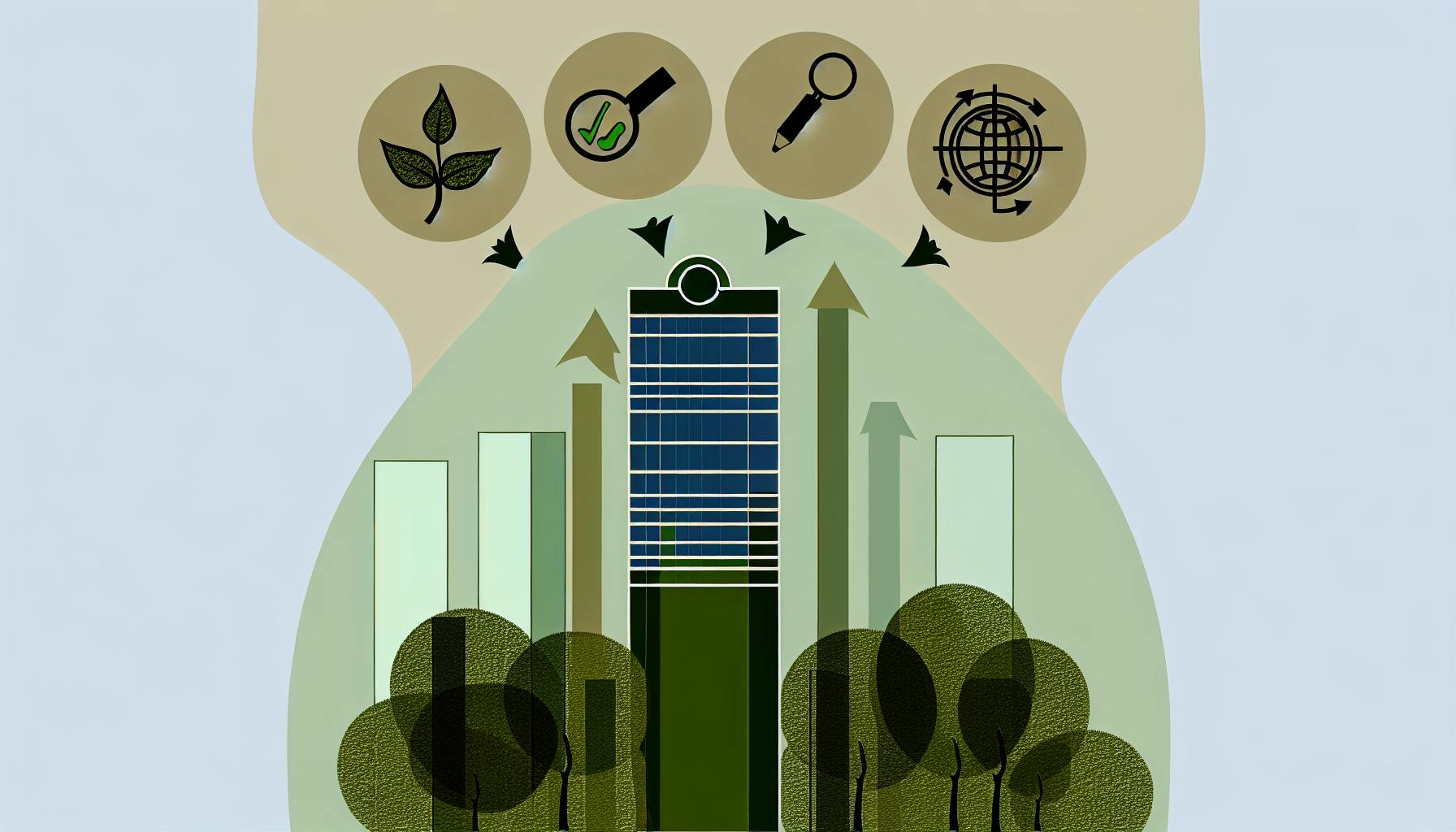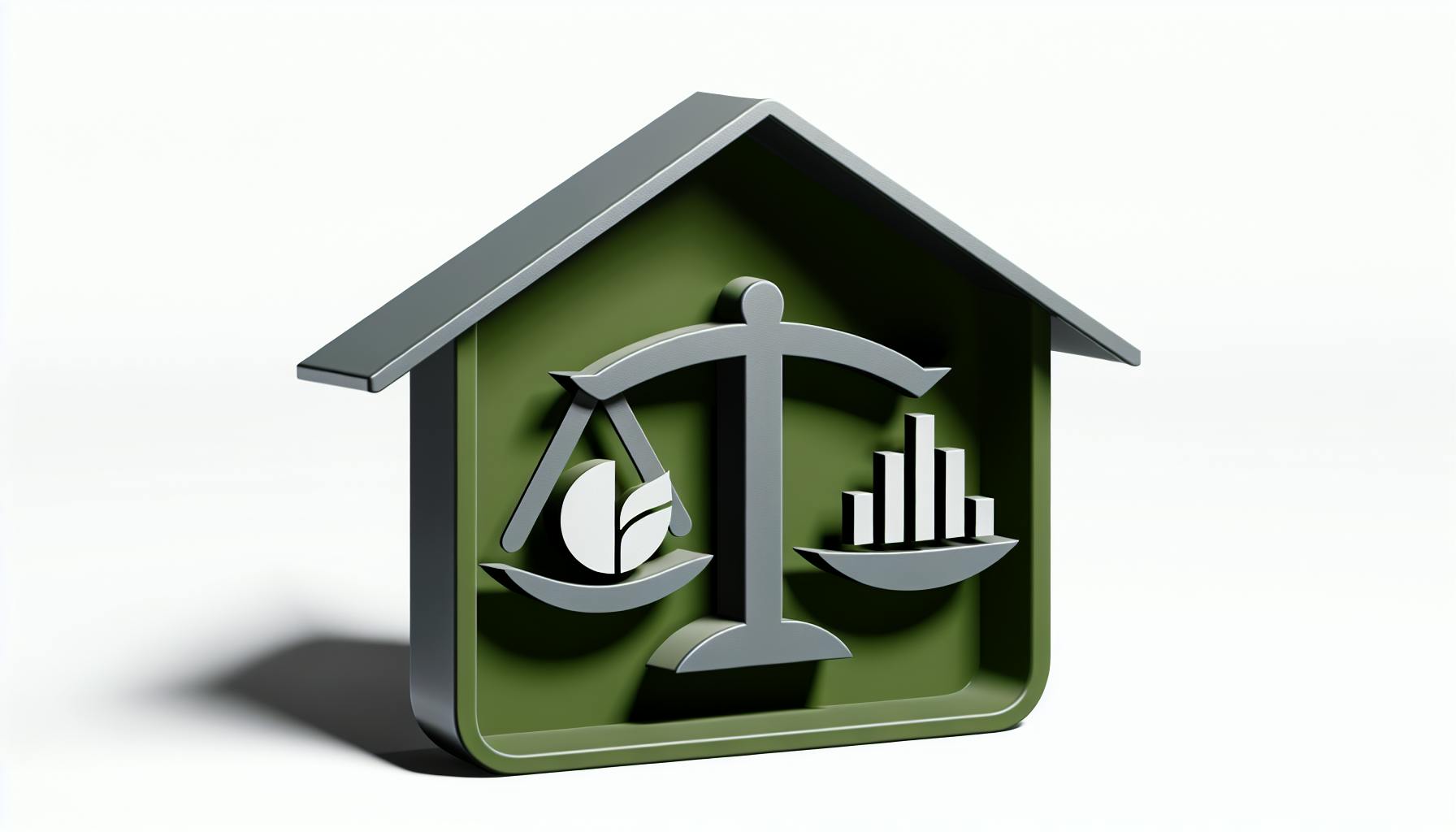Understanding greenhouse gas emissions can be confusing for SMEs. Specifically, tracking Scope 3 emissions that occur indirectly in a company's value chain seems daunting.
However, by following the Greenhouse Gas Protocol, SMEs can effectively measure and reduce Scope 3 emissions as part of their sustainability strategy.
This guide will explain what constitutes Scope 3, why it matters for SMEs, approaches for gathering emissions data across value chain activities, setting science-based targets, and strategies to reduce Scope 3 emissions through supplier engagement, product design, and technology.
Introduction to Greenhouse Gas Protocol Scope 3 for SMEs
The Greenhouse Gas (GHG) Protocol provides the global standard for measuring and managing greenhouse gas emissions from private and public sector operations, value chains, products, cities, and policies.
Overview of GHG Protocol Scope 1, 2, 3
The GHG Protocol categorizes emissions into three scopes:
- Scope 1 covers direct emissions from owned or controlled sources like fuel combustion, company vehicles, and manufacturing.
- Scope 2 accounts for indirect emissions from the generation of purchased electricity, steam, heating, or cooling.
- Scope 3 includes all other indirect emissions from activities not owned or controlled by the company but related to their operations like transportation, distribution, supply chain, investments, etc.
While Scope 1 and 2 are mandatory to report in many regions, Scope 3 emissions make up the majority of most companies' carbon footprints and offer the greatest potential for reductions.
Introducing Scope 3 Emissions: Beyond Direct Impact
Scope 3 emissions essentially capture the full lifecycle emissions of a company's products and operations outside their direct control. Although not yet mandated, measuring Scope 3 allows companies to identify emission hotspots to target for reduction. It also enables engagement with suppliers and customers on sustainability efforts for greater impact across the value chain.
Some examples of Scope 3 activities include:
- Employee travel
- Transportation of goods
- Waste disposal
- Use of sold products
- Investments
What are the 15 Scope 3 Categories?
The GHG Protocol defines 15 categories of Scope 3 emissions:
- Purchased Goods & Services
- Capital Goods
- Fuel & Energy-Related Activities
- Upstream Transportation & Distribution
- Waste Generated in Operations
- Business Travel
- Employee Commuting
- Upstream Leased Assets
- Downstream Transportation & Distribution
- Processing of Sold Products
- Use of Sold Products
- End-of-Life Treatment of Sold Products
- Downstream Leased Assets
- Franchises
- Investments
The Importance of Tracking Scope 3 for SMEs
There are several compelling reasons SMEs should measure their Scope 3 emissions:
- Stakeholder demands - Customers, investors, employees expect climate action.
- Emission reduction opportunities - Scope 3 makes up most emissions for SMEs.
- Supply chain engagement - Incentivize suppliers/partners sustainability.
- Regulatory preparation - Anticipate policies requiring Scope 3 disclosure.
By understanding their Scope 3 impacts, SMEs can target hotspots for reduction, prepare for emerging regulations, satisfy stakeholder expectations, and ultimately build more sustainable and resilient business models for the future.
What is scope 3 of greenhouse gas protocol?
Scope 3 emissions refer to all indirect greenhouse gas (GHG) emissions associated with a company's value chain. According to the greenhouse gas protocol scope 3 standard, scope 3 captures emissions that occur from sources not owned or controlled by the reporting company.
Scope 3 essentially looks beyond a company's direct operations and evaluates the lifecycle impacts of its entire supply chain network. This includes both upstream and downstream activities related to operations.
Some examples of scope 3 emission sources as defined by the GHG protocol include:
- Purchased goods and services
- Transportation and distribution
- Waste disposal
- Employee commuting
- Leased assets
- Investments
- Franchises
- Use of sold products
There are 15 categories of scope 3 emissions in total that companies can evaluate based on relevance and ability to contribute to reductions.
Understanding scope 3 is important for companies looking to implement comprehensive emissions accounting and set science-based targets. Evaluating the full lifecycle impact can help identify hotspots for emissions reduction efforts.
Small and medium enterprises (SMEs) may have over 80% of carbon impacts occurring in their scope 3. As stakeholders demand increased climate action and transparency, measuring and reporting value chain impacts is becoming extremely important.
What are the scope 3 categories for GHG?
Scope 3 emissions refer to indirect greenhouse gas (GHG) emissions across a company's entire value chain. The GHG Protocol defines 15 categories of scope 3 emissions that enable businesses to account for and report on these indirect emissions.
Some key scope 3 categories include:
- Category 1: Purchased goods and services - Emissions from extracting, producing, and transporting goods and services purchased by the company
- Category 2: Capital goods - Emissions from producing capital goods like equipment, facilities, and machinery purchased or acquired by the company
- Category 3: Fuel and energy-related activities (not included in scope 1 or 2) - Emissions related to producing or supplying the fuel and energy used by the company
- Category 4: Upstream transportation and distribution - Transportation and distribution of products purchased by the company before they enter the company, like inbound logistics
- Category 5: Waste generated in operations - Disposal and treatment of waste generated from the company's operations
- Category 6: Business travel - Transportation of employees for business purposes in vehicles not owned or operated by the company
- Category 7: Employee commuting - Transportation of employees between their homes and work sites
- Category 8: Upstream leased assets - Operating leased assets not included in scope 1 and 2, like leased office spaces or vehicles
Understanding these categories allows companies to identify hotspots for potential emissions reductions up and down their value chain. Measuring scope 3 emissions provides a more complete carbon footprint to inform sustainability strategies.
What is the GHG Protocol definition of scope 1 2 and 3?
The Greenhouse Gas (GHG) Protocol defines three categories of emissions:
Scope 1: Direct GHG emissions from sources owned or controlled by the company. Examples include emissions from fuel combustion in company vehicles and facilities.
Scope 2: Indirect GHG emissions from purchased electricity used in the company's operations.
Scope 3: All other indirect emissions from sources not owned or directly controlled by the company but related to its activities. There are 15 categories of scope 3 emissions defined in the GHG Protocol.
Some examples of scope 3 emissions include:
- Transportation and distribution (Category 4)
- Business travel (Category 6)
- Investments (Category 15)
Small and medium enterprises (SMEs) should set a goal to measure scope 1 and 2 emissions as a starting point. Assessing scope 3 emissions can be more challenging but also reveals the largest emission sources across the value chain. Using tools to calculate scope 3 emissions can simplify the process over time.
sbb-itb-919600f
How to calculate Scope 3 GHG emissions?
Calculating Scope 3 greenhouse gas (GHG) emissions can seem daunting, but breaking it down step-by-step makes it more manageable.
The Greenhouse Gas Protocol defines Scope 3 emissions as all indirect emissions not covered in Scope 2 that occur in the value chain of a company, including both upstream and downstream emissions. For many companies, Scope 3 emissions make up the majority of their total emissions footprint.
There are two main methods for calculating Scope 3 emissions:
Spend-based Method
The spend-based method involves using financial expenditure data and emissions factors to estimate emissions. The basic formula is:
Spend ($) x Emission Factor = Scope 3 emissions
For example, if a company spends $100,000 on business travel and the emissions factor is 0.15 kgCO2e/$ spent, then the estimated Scope 3 emissions from business travel would be 15,000 kgCO2e.
This method provides a simple way to generate a rough emissions estimate but can have large uncertainties. More accurate emissions factors tailored to specific spend categories lead to better results.
Activity-based Method
The activity-based method tracks emissions based on activity data from suppliers and the actual emissions associated with products and services purchased. The basic formula is:
Activity Data x Emission Factor = Scope 3 emissions
For example, if a company purchased 100,000 kWh of electricity, and the regional grid emissions factor is 0.5 kgCO2e/kWh, then the estimated Scope 3 emissions from purchased electricity would be 50,000 kgCO2e.
This method is more accurate but relies on getting detailed data from suppliers. Encouraging supplier engagement is key to improving Scope 3 calculations over time.
Carefully scoping the boundaries of the Scope 3 assessment and collecting quality data are vital for producing meaningful and actionable results through either calculation method. There are also Scope 3 emissions calculators that can assist with streamlining the quantification process.
Establishing a Scope 3 Emissions Baseline
This section outlines approaches SMEs can use to calculate a Scope 3 emissions baseline. Having this baseline enables companies to track progress in reducing emissions over time.
Approaches to Gathering Data for Scope 3 Inventory
SMEs often lack the data needed for a bottom-up Scope 3 emissions inventory. Top-down approaches can provide reasonable estimates:
- Industry averages - Apply emissions factors derived from industry averages to estimate Scope 3 emissions. However, industry averages can overlook company-specific sources.
- Economic input-output models - Relate economic data to emissions using environmentally-extended input-output models. These models estimate emissions across the full supply chain.
Collecting Primary Data for GHG Protocol Scope 3 Category 1
Primary data enables more accurate Scope 3 calculations. For category 1 emissions from purchased goods/services:
- Supplier surveys - Survey key suppliers to gather emissions data for the goods and services purchased. This provides tailored Category 1 estimates.
- Supplier engagement - Collaborate with suppliers to calculate emissions for the specific materials procured. Joint data collection initiatives enhance inventory quality.
Applying the Scope 3 Emissions Calculator
The GHG Protocol Scope 3 Evaluator estimates emissions based on:
- Industry sector
- Geographic location
- Annual spend
The tool covers all 15 Scope 3 categories. It enables SMEs to rapidly compile a Scope 3 inventory.
Focusing on High-Impact Scope 3 Categories
For SMEs, purchased goods (Cat. 1), transportation (Cat. 4), and waste (Cat. 5) often dominate Scope 3 emissions. Concentrating measurement efforts on these high-impact areas allows for effective resource allocation. As data collection capacity expands, SMEs can address remaining categories.
Setting Science-Based Targets for Scope 3 Emissions
Companies seeking to reduce their value chain emissions can set science-based targets aligned with the Scope 3 Standard. This involves analyzing emissions across Scope 3 categories and defining ambitious goals tailored to business activities.
Aligning with the Scope 3 Standard for Target Setting
The Greenhouse Gas (GHG) Protocol Scope 3 Standard provides guidelines for companies to set science-based targets covering indirect emissions. Key recommendations when developing Scope 3 goals include:
- Prioritizing emissions from categories with the greatest reduction potential
- Aligning targets with 1.5°C decarbonization pathways
- Using the Sectoral Decarbonization Approach (SDA) to define an intensity-based target
- Verifying goals through the Science Based Targets initiative (SBTi)
Following these best practices allows companies to transition Scope 3 tracking into meaningful emissions reductions.
Developing Targets for GHG Protocol Scope 3 Category 3
Scope 3 category 3 covers emissions from upstream fuel-and-energy-related activities (F&E) like extraction, production, and transportation. For companies in energy-intensive sectors, category 3 often represents the largest source of indirect emissions.
Strategies for reducing F&E emissions include:
- Switching to renewable energy sources
- Engaging suppliers on their transition plans
- Exploring product and service redesigns to cut embedded emissions
Setting concrete F&E targets is an integral part of any net-zero transition.
Engagement with the Science Based Targets Initiative (SBTi)
The SBTi assesses corporate emissions targets against the latest climate science, adding credibility through independent verification. Once approved, companies can promote their targets as science-based.
While SBTi submission is voluntary, participation signals strategic intent to investors and stakeholders. It also allows access to guidance resources that help track progress against goals over time.
Incorporating Targets into Corporate Sustainability Plans
To systematically achieve Scope 3 targets, companies should embed emissions tracking and reductions into core business functions:
- Procurement: Integrate emissions data into supplier scorecards and selections
- Product Design: Analyze life cycle impacts to identify eco-efficiency opportunities
- Reporting: Monitor target progress through annual sustainability reports
This cross-functional coordination ensures sustainability permeates all commercial activities over the target timeline.
Effective Strategies for Scope 3 Emission Reductions
Reducing Scope 3 emissions across the value chain is key for companies aiming to set science-based targets and achieve net-zero emissions. There are several effective strategies SMEs can implement to drive down Scope 3 emissions.
Addressing Purchased Goods and Services - Scope 3 Category 1
Scope 3 category 1 covers emissions from purchased goods and services. For many companies, this makes up a large share of overall Scope 3 emissions. Strategic supplier engagement programs can help address these emissions.
- Work with key suppliers to calculate product lifecycle footprints and identify emission hotspots
- Set supplier emission reduction targets and provide support to reach goals
- Prefer suppliers with science-based targets and proven sustainability improvements
- Develop green procurement standards to systematically favor lower-carbon goods
Enhancing Sustainability in Procurement Practices
Integrating greenhouse gas protocol scope 3 requirements into procurement processes allows companies to systematically prefer lower-carbon goods and services:
- Update RFP templates to require disclosure of product emissions data
- Include emissions performance criteria in supplier scorecards for evaluation
- Provide procurement team training on calculating lifecycle emissions
- Implement digital tools to simplify collecting and benchmarking emissions data
Designing Products for Lower Scope 3 Emissions
Redesigning products and processes can significantly reduce lifecycle emissions related to Scope 3 category 15. Tactics include:
- Perform lifecycle assessments to identify emissions hotspots for priority products
- Set science-based product emission reduction targets
- Design products for durability, repairability, recyclability
- Shift to renewable energy and implement efficiency measures in operations
- Optimize logistics and distribution networks for lower-carbon transportation
Utilizing Technology to Track and Manage Scope 3 Emissions
Digital solutions help companies automate Scope 3 emissions tracking and identification of reduction opportunities:
- Implement carbon accounting software for automated data collection
- Leverage analytics for data-driven insights into emission sources
- Model different reduction scenarios to determine impact and costs
- Centralize Scope 3 data management for consistent tracking and reporting
- Integrate with procurement and ERP systems to embed emissions in processes
Taking a strategic, digitally-enabled approach across the value chain is key for SMEs seeking substantial greenhouse gas protocol scope 3 reductions aligned with climate science.
Showcasing Scope 3 Emissions Management Achievements
Promoting Internal Engagement and Awareness
Providing employees visibility into your company's Scope 3 goals and reduction strategies helps motivate them and unlock ideas for achieving shared sustainability objectives. Consider regular internal communications highlighting your Scope 3 emissions sources, targets, and performance. Celebrate wins along the journey to net-zero. Encourage teams to brainstorm innovations that could reduce supply chain or product emissions. An engaged, empowered workforce multiplies your sustainability efforts.
Transparent Reporting to External Stakeholders
Communicating your Scope 3 emissions data and roadmap through annual sustainability reports builds credibility with stakeholders. Detail the specific Scope 3 categories measured, goals set, and year-over-year progress. Share tangible examples of partnerships, process improvements, or offerings redesigns driving down emissions. Such transparency demonstrates strategic intent on climate action to investors and customers alike.
Collaborating for Wider Industry Impact
Join relevant industry working groups or public commitments on sustainability to expand your influence, while gaining recognition as a leader. Coordinate with sector peers on decarbonization opportunities within shared supply chains. Co-develop guides outlining Scope 3 best practices for your industry. Vocalize support for policies advancing climate goals. Such collaboration signals your forward-thinking stance and multiplies sustainability gains.
Recap and Forward-Looking Sustainability Actions
In summary, comprehensively tracking Scope 3 emissions positions SMEs to continually refine their net-zero roadmaps. Internal and external transparency on performance keeps teams rallied around shared targets. Sectoral and policy collaboration creates frameworks for collective action. Ultimately, Scope 3 management unlocks business value, stakeholder trust, and industry advancement on urgent climate priorities. The journey has just begun.



